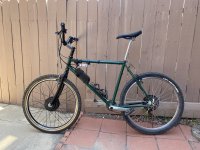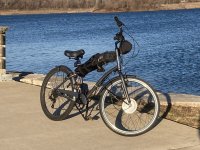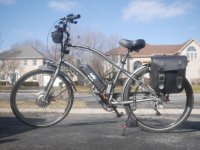ToAsTyWoAsTy
1 mW
I know, I know.. another newbie needing help. I was pointed to this forum for the biggest wealth of ebike knowledge so here I am.
I have this bike...
 electra.trekbikes.com
electra.trekbikes.com
From what I have gathered the rear hub Bafang 750 or 500 models would be good for flat Florida roads. I would rarely go over 20 miles and looking to cruise around 20mph or faster if its not a ton more cost. Also I weigh about 200lbs and I would like to have a throttle.
My problem is when I look at the different conversion kits I am confused on which one would work/fit my exact bike. Also if anything extra would be need to convert my bike and where the best battery location would be.
Thank you for reading and if you can help point me in the correct direction then thank you in advance for that
I have this bike...
Townie Path 9D EQ Step-Over - Electra Bikes
Start your two-wheeled adventure with Townie Path 9D EQ Step-Over. See the bike and visit your local Electra retailer. Shop now!
From what I have gathered the rear hub Bafang 750 or 500 models would be good for flat Florida roads. I would rarely go over 20 miles and looking to cruise around 20mph or faster if its not a ton more cost. Also I weigh about 200lbs and I would like to have a throttle.
My problem is when I look at the different conversion kits I am confused on which one would work/fit my exact bike. Also if anything extra would be need to convert my bike and where the best battery location would be.
Thank you for reading and if you can help point me in the correct direction then thank you in advance for that




